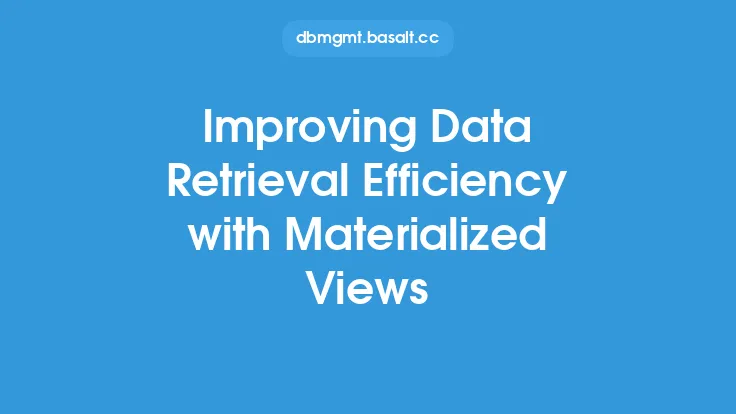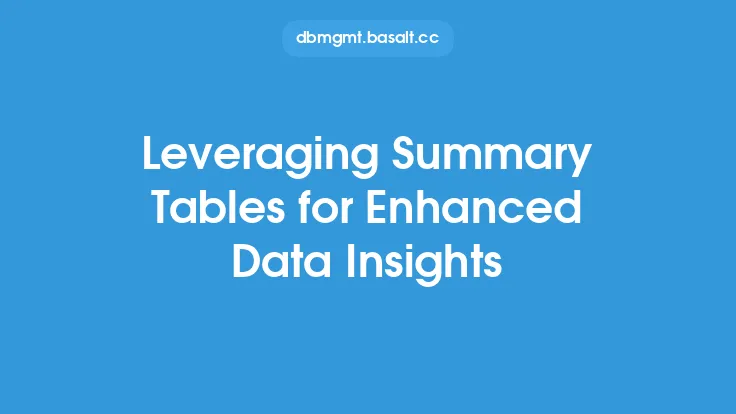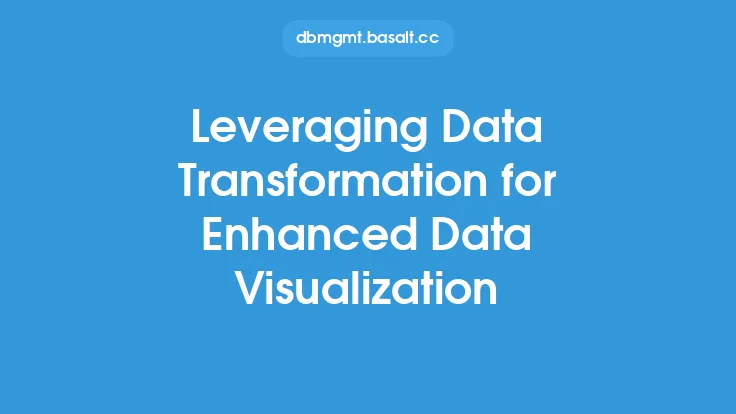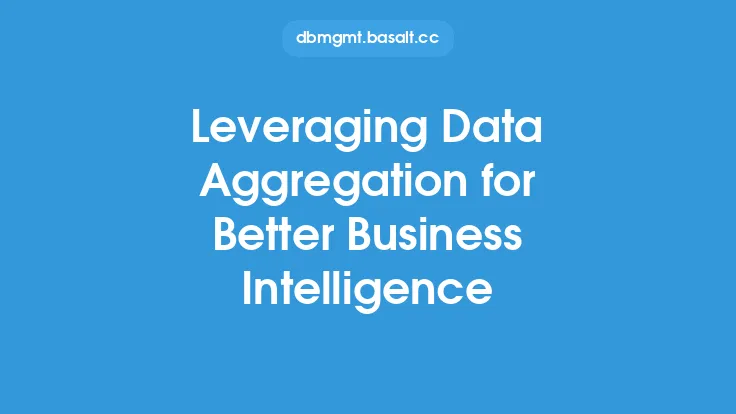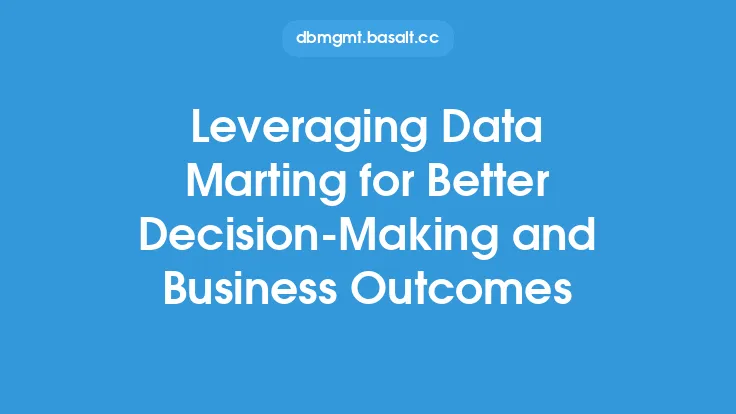Data analysis is a critical component of any organization's decision-making process, and it relies heavily on the ability to access and manipulate data efficiently. One technique that has gained popularity in recent years is the use of materialized views, which can significantly enhance data analysis capabilities. In this article, we will delve into the world of materialized views and explore how they can be leveraged to improve data analysis.
Introduction to Materialized Views
Materialized views are database objects that store the result of a query in a physical table, making it possible to access the data directly without having to execute the query every time. This approach differs from traditional views, which are virtual tables that are computed on the fly when queried. Materialized views are particularly useful when dealing with complex queries that involve multiple joins, subqueries, or aggregations, as they can reduce the computational overhead and improve query performance.
Benefits of Materialized Views in Data Analysis
Materialized views offer several benefits that make them an attractive solution for data analysis. Firstly, they provide fast data access, as the data is pre-computed and stored in a physical table. This makes it ideal for applications that require real-time data analysis, such as business intelligence dashboards or data visualization tools. Secondly, materialized views can simplify complex queries, making it easier to analyze data and perform ad-hoc queries. Finally, materialized views can reduce the load on the database, as the data is pre-computed and stored, reducing the need for repeated queries.
Types of Materialized Views
There are several types of materialized views, each with its own strengths and weaknesses. The most common types include:
- Simple materialized views: These are the most basic type of materialized view, which store the result of a single query.
- Complex materialized views: These materialized views store the result of multiple queries, often involving joins, subqueries, or aggregations.
- Partitioned materialized views: These materialized views store data in multiple partitions, making it easier to manage large datasets.
- Indexed materialized views: These materialized views store data in an indexed format, making it faster to query and analyze.
Creating and Maintaining Materialized Views
Creating and maintaining materialized views requires careful planning and consideration. The process typically involves defining the query that will be used to populate the materialized view, specifying the storage parameters, and scheduling the refresh interval. The refresh interval is critical, as it determines how often the materialized view is updated to reflect changes to the underlying data. There are several refresh methods available, including:
- Full refresh: This method involves re-computing the entire materialized view from scratch.
- Incremental refresh: This method involves updating only the changes made to the underlying data since the last refresh.
- On-demand refresh: This method involves updating the materialized view only when it is queried.
Querying Materialized Views
Querying materialized views is similar to querying traditional tables, with a few key differences. When querying a materialized view, the database will typically use the pre-computed data stored in the materialized view, rather than executing the underlying query. This can significantly improve query performance, especially for complex queries. However, it's essential to note that materialized views can become stale if the underlying data changes, and the refresh interval is not frequent enough.
Best Practices for Using Materialized Views in Data Analysis
To get the most out of materialized views in data analysis, it's essential to follow best practices. These include:
- Define clear goals and objectives: Before creating a materialized view, define what you want to achieve with it.
- Choose the right type of materialized view: Select the type of materialized view that best fits your needs, considering factors such as data complexity and refresh frequency.
- Optimize storage parameters: Configure storage parameters, such as indexing and partitioning, to optimize query performance.
- Monitor and maintain materialized views: Regularly monitor materialized views to ensure they are up-to-date and performing optimally.
Common Use Cases for Materialized Views
Materialized views have a wide range of applications in data analysis, including:
- Data warehousing: Materialized views are often used in data warehousing to pre-compute complex queries and improve query performance.
- Business intelligence: Materialized views are used in business intelligence to provide fast data access and simplify complex queries.
- Data visualization: Materialized views are used in data visualization to provide real-time data access and improve query performance.
- Reporting and analytics: Materialized views are used in reporting and analytics to provide fast data access and simplify complex queries.
Conclusion
Materialized views are a powerful tool for enhancing data analysis capabilities. By providing fast data access, simplifying complex queries, and reducing the load on the database, materialized views can significantly improve data analysis efficiency. By understanding the benefits, types, and best practices for using materialized views, organizations can unlock the full potential of their data and make better-informed decisions. Whether you're working with data warehousing, business intelligence, data visualization, or reporting and analytics, materialized views are an essential component of any data analysis strategy.
